History of the ITC Naarden
The International Theosophical Centre in Naarden (ITC) has a stirring history in which its existence has been challenged several times.
The Surroundings of the ITC
The ITC is situated on the most northern part of the Utrecht chain of hills, sand of which was pushed forward over long distances by glaciers during the last Ice Age. Most of the rest of the country was a huge delta, with rivers, lakes, and swamps. It seems unavoidable that people lived on this dry ground in ancient times, while they were able to fish in the nearby Flevo- lake – in those days part of the Rhine delta – and collect food in the fertile wet grounds. Grave mounds and finds of Roman coins in the neighbourhood seem proof of that. Since the 14th century the fortified city of Naarden was situated at a strategic point at the end of the hills on the way to Amsterdam. In the 17th to 19th centuries sand was dug here for the construction of Amsterdam. The canals and low fields close by the ITC still bear witness to that and contribute to the beauty of the area. In the 19th century the area became much better accessible, as railways and better roads were constructed, and many mansions were built here for wealthy people from Amsterdam.
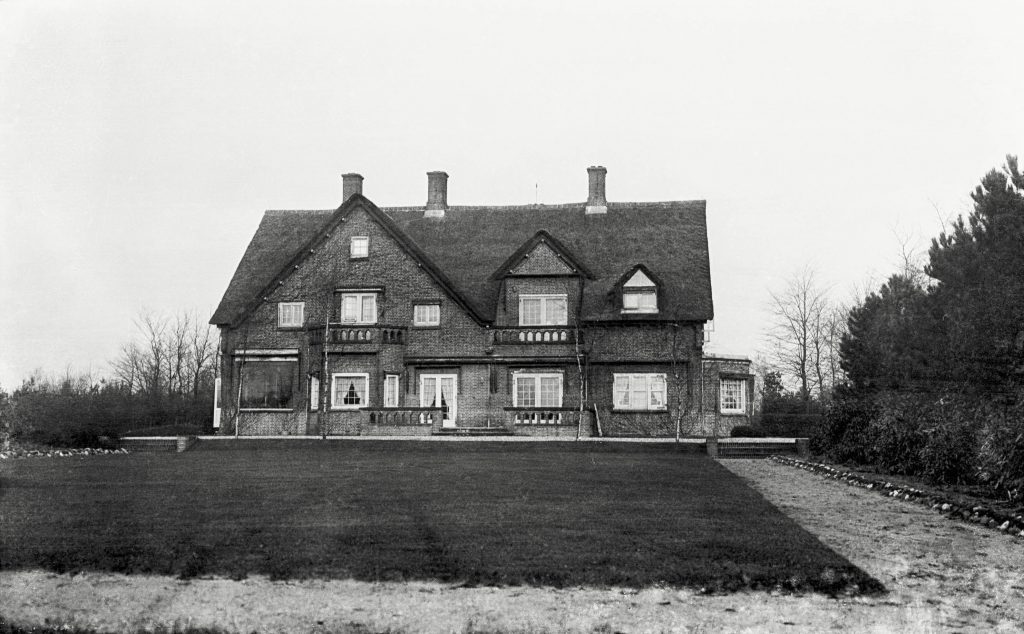
One of the more recent villas was the summerhouse for the Amsterdam banker’s family Van Eeghen. The house De Duinen (The Dunes) was built in 1912 by the architect Th. Rueter who also designed a large part of the interior of the house. The garden was designed by L.A. Springer and was adjusted by D.F. Tersteeg in 1920.
While located in the municipality of Naarden, originally the house had the post address of the municipality of Huizen, reason why the Centre was referred to as “the Huizen Centre” in the past. Later the post address became part of the municipality of Naarden which name is now linked to that of the ITC as a reference. Both house and garden were labelled as monuments by the Province of North Holland, status of which has been withdrawn because of budget reasons.
The picture of the first years of the ITC is not complete since the archive of the ITC was lost during the war, probably destroyed by its Trust Board. The pre-war history is based on rather incidental documents which individual Board members kept at home and which are now in the possession of the ITC.
A Donation to the Theosophical Society
After her divorce in 1921 Mrs Mary Van Eeghen-Boissevain (or Mevrouw Mary van Eeghen as she was always referred to in the TS) received the house De Duinen and the surrounding grounds out of the estate. In her house she received amongst others the famous Indian poet Rabindranath Tagore. He invited her to come to India. As she intended to stay in India for a longer time, she asked her son to rent out the house. During a visit to Tiger Hill Mrs. Van Eeghen experienced a spiritual revelation in which she was asked to take up important work at the estate. It was, however, not yet clear what work she had to take up and what she should do with the house. She strongly had the feeling that she was to fill her life with an important task.
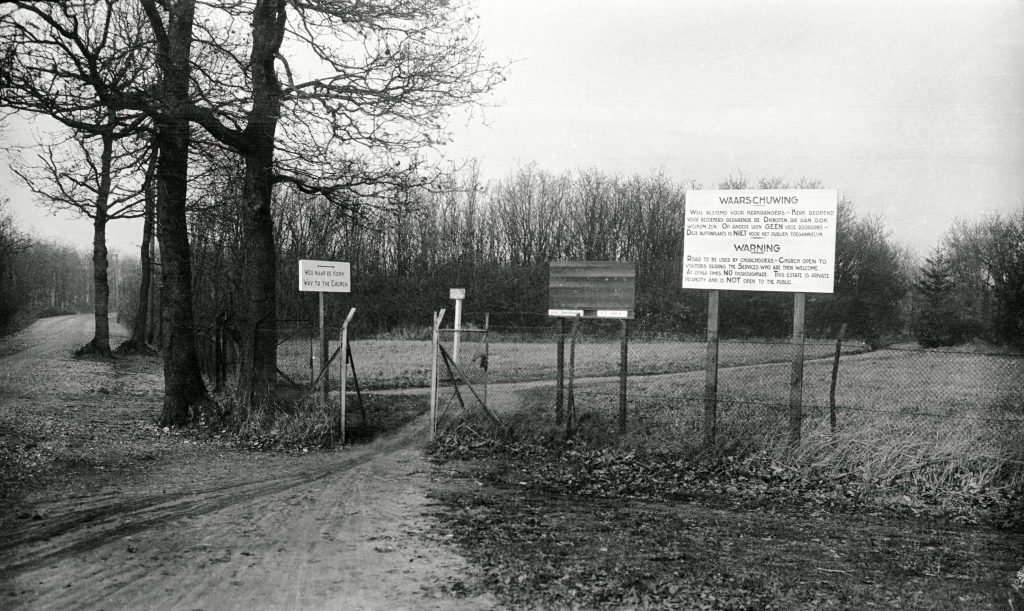
Returning home, she started to study astrology, and became a member of the Theosophical Society in March 1923.
Shortly after that she met Mr. W.B. Fricke, one of the Founding Fathers of the Dutch section, at the country day of the nearby Gooi lodge.
Mr. Fricke visited the estate and told her: "Madam, there is such a strong influence of angels here, do not take a hasty decision about the house. When time is right it will come."
Next, she came into contact with the Liberal Catholic Church (LCC) and was baptized in December 1923 by the first LCC priest in the Netherlands, Mr. J. Schuurman. In 1924 Mr. Fricke told her: “The influence of the angels has much increased, I believe you will not have to wait much longer.” She then heard that Mr. P.M. Cochius got the order from Mrs. Besant to search for an estate in Holland where bishop J.I. Wedgwood could begin to train three of four young persons in the ceremonies of the church. The same year Wedgwood moved to the House and a small private chapel was built, dedicated to the archangel St. Michael and all Angels.
In 1925 Mrs. Van Eeghen intended to give the estate to Wedgwood but he refused to receive this as he found it had to serve a wider aim, rooted in theosophical work. Later that year the Centre was visited by George and Rukmini Arundale as well as by Annie Besant.
Mrs. Van Eeghen then offered the entire estate of 17 hectares and the house to Annie Besant for the service of the Masters. Annie Besant accepted this offer in Their Name. St. Michaels Foundation was established 11 September 1925, followed later that year by the Annie Besant lodge, a Montessori school, a Co-Masonry lodge, a section of the Order of the Star, a healing group, the Round Table and the “World League of Motherhood”. During the following years various active theatrical activities were established. Plays by the “St. Michael’s Players” can be found in the ITC archives.

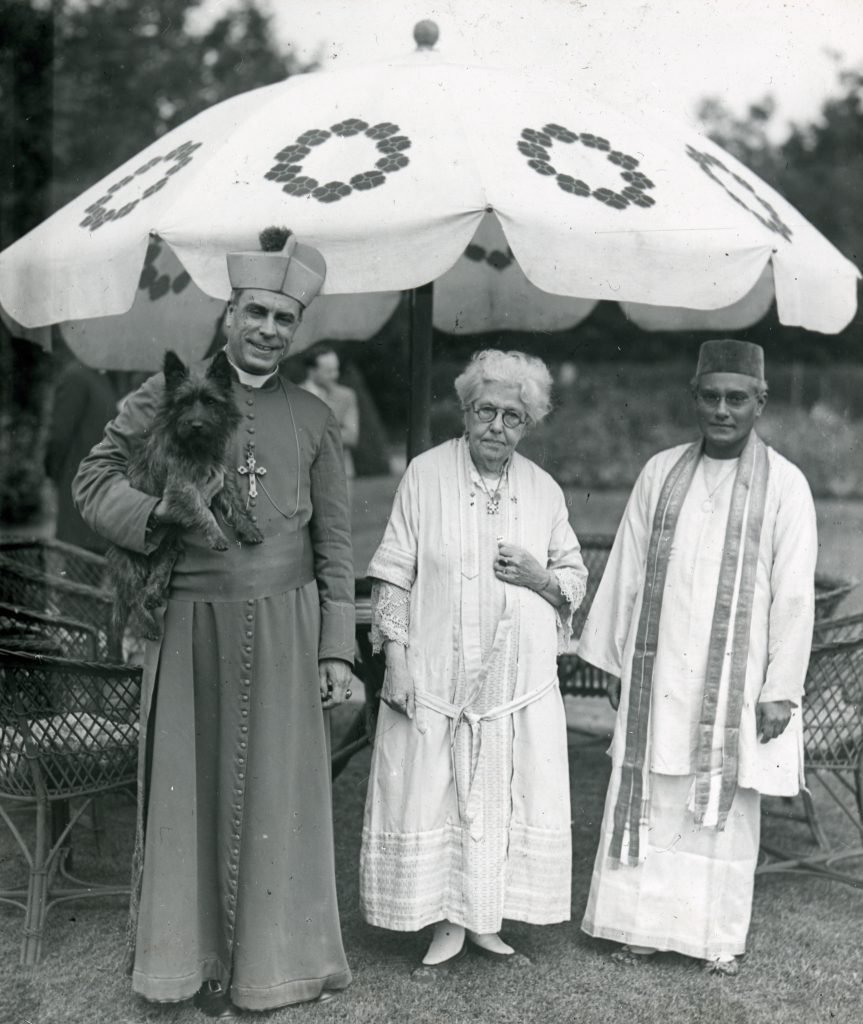
Wedgwood became Head of the Centre.
Remarkably no formal relationship with Adyar was created.
Both Annie Besant as well as George Arundale as President of the TS became honorary chairman of the ITC.
Jinarajadasa, the fourth President of the TS, decided not to accept this title, after which this custom ceased.
Aims of the Centre
The first statutes of the Foundation gave as aim: “To promote Universal Brotherhood and International Peace, by means of maintaining and promoting all such social, political, spiritual, educational and other activities which promote this principle according to the judgment of the Board”. In 1959 the description of “political” activities was changed into “theosophical”. In the nineteen thirties political discussions were clearly relevant to young TS members. In the nineteen seventies the aim was extended to “dedicated to the service of the Hierarchy and aims at providing a worthy channel for Their Work”. As the official aims are mentioned in legal documents it was then decided to describe as the aims: “The object of the Foundation is to foster the principle of Universal Brotherhood and Peace under the inspiration of the highest human values, with the will to serve the world and under the perspective of the Oneness of Life in all living beings and in all”. In practice this means that the Foundation aims to foster the aims of the Theosophical Society. The Council made a clear –internal- statement that “under the inspiration of the highest human values” is meant dedicated to the service of the Hierarchy


The Disaster Year 1928
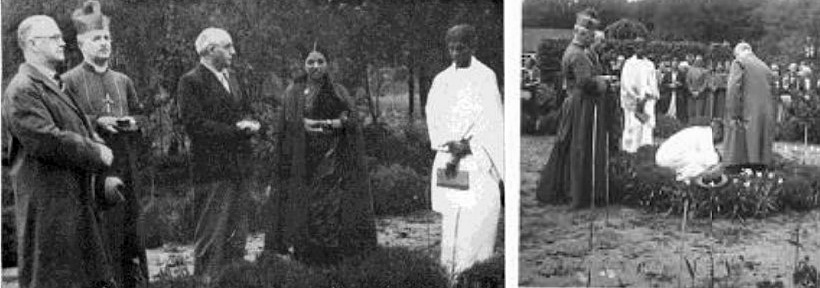
In 1928 a large church for 400 persons was built in addition to the original chapel, which only seated 18 persons, in 1925 extended to 60 within 10 days. Comments from Annie Besant: “Now, Mevrouw, I will never again say the Dutch are slow”. Due to lightning the church burnt down on August 12, 13 days after its consecration! This is currently the place of the Garden of Remembrance, where in 1938 part of the ashes of Annie Besant was places.
It was then decided to use the eastern part of the large Masonic temple as church again, which large building (10 by 30 meters) came in use earlier that year and stood at the place of the current Besant Hall. The Theosophical lodge had its own small building on the grounds of the ITC, in the place where the current LCC chapel is now located.
Sale of part of ITC and Foundation of Tekels Park in Camberley UK
The same year Wedgwood wanted to relocate the Centre to England. It is not clear whether this wish occurred before or after the fire. Mrs. Van Eeghen refused this as she found that a spiritual Centre could not be replaced. Later this was clearly confirmed by C.W. Leadbeater. Nevertheless, Wedgwood intended to proceed with his plans for which he got permission from Annie Besant.
To make the purchase of Tekels Park in Camberley possible, Mary van Eeghen bought back the eastern part of the estate in 1929 for 80.000 guilders, including St. Michael’s House, ten hectares of land, the garage and the house at the entrance, property she had donated four years earlier! In addition to this capital the insurance money received for the church after the fire was handed over to Wedgewood. The western part of the Centre, with its building for activities remained under the ownership of the Foundation. Wedgwood moved to Tekels Park, where he passed away in 1951.
These changes and losses of both capital and the departure of Wedgwood had never been the intention at the time of the donation and foundation of the Centre just a few years earlier. As a result, this was the beginning of a difficult period for the Centre. The Trust Board had practically no financial means. Mrs. Van Eeghen needed her capital again. In 1932 the Foundation bought the House and 7.5 hectares back from Mrs Van Eeghen for 80.000 guilders, which resulted in a remaining debt to her of 70.000 guilders.
The exploitation of St. Michael’s House was a heavy burden for the Foundation, and several options were discussed. The first years each individual year had its own solution and letters were sent around with requests for donations. Renting out to theosophical hosts, to third parties and even sale to third parties were options frequently discussed. In 1934 and 1935 the house was rented by a group of Young. Even in 1935 there were serious plans to sell St. Michael’s House as its exploitation would remain structurally difficult and the House was not necessary for the work itself. In 1937 the House was rented by George Arundale, which rent was paid by John Coats, later the sixth President of the TS.
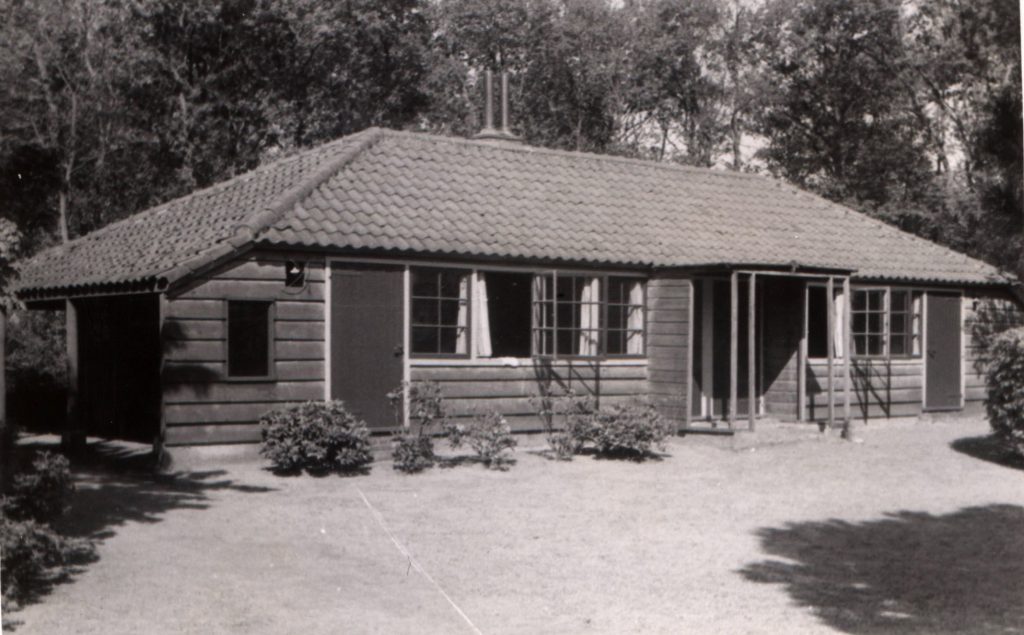
Nevertheless, many people believed the Centre, including St. Michael’s House, should remain intact as the Theosophical Centre in Europe. This meant that the debt to Mrs. Van Eeghen had to be paid off. Despite the recession small and large donations arrived from all over the world. In England, the Camberley-Huizen Fund was founded with the aim to repay the “occult” debt to the ITC.
George Arundale insisted that Tekels Park could only be “acknowledged” if the future of Huizen were safe. This was of course a considerable challenge in times of recession as TS members in England were also asked to contribute to the Centre in Tekels Park.
About £3,700 (some 37.000 guilders at the exchange rate of the time) was collected up to 1937 and transferred to the Netherlands. Thanks to a donation from the USA the debt to Mevrouw Mary could be paid off after which the debt of Tekels Park to the ITC was considered cleared.
The Years of War
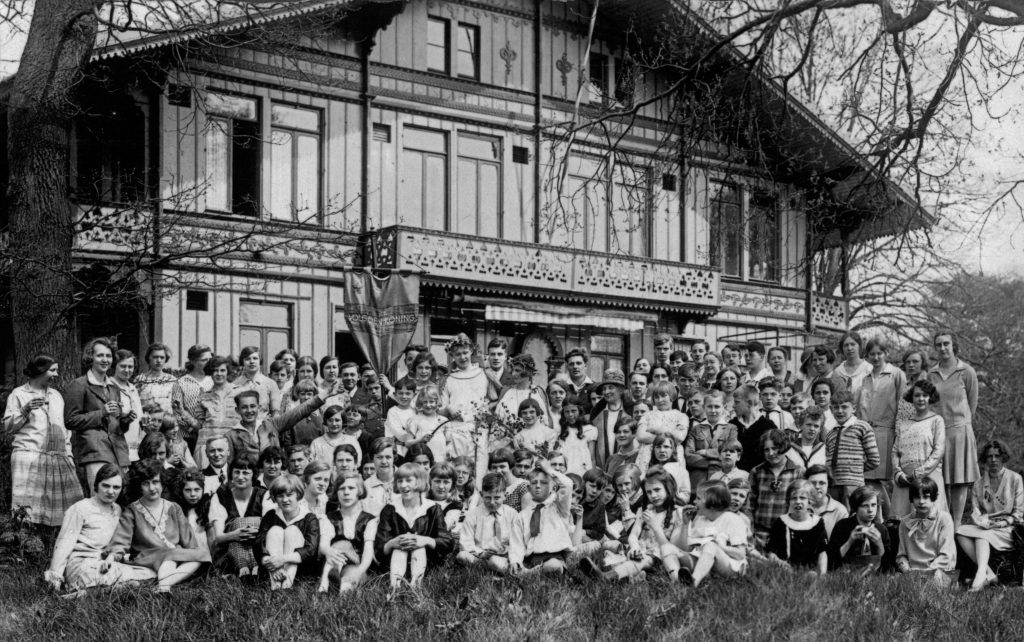
To avoid confiscation by the German occupation the statutes of the ITC were changed in December 1940, when it officially became an LCC church centre.
All references to the TS and English contacts were removed and even the ashes and memorial stone of Annie Besant were reallocated to the private garden of Mrs. Mary.
The church activities continued, whereas the theosophical lodge was requested to relocate to the nearby Drafna estate, as this estate with a theosophical school was considered lost in any case!
From the war years only an elaborate after-war report from the treasurer remained. Woodcutters were hired for the sale of wood to Centre members living nearby. Home grown vegetables and fruit were also a source of income, as was the sale of the remaining stock of coal and redundant furniture. The grand piano “went” for 3.000 guilders!
The wood suffered a lot during the war, partly through large scale theft. The German occupation tried to confiscate the ITC several times, despite the – probably somewhat artificial – church status. In January 1943, the Foundation was forcibly abolished, and all its possessions were confiscated. The inhabitants of St. Michael’s House were allowed to stay. In July of that year the confiscation was abrogated but the Foundation had to pay for all costs of the confiscation.
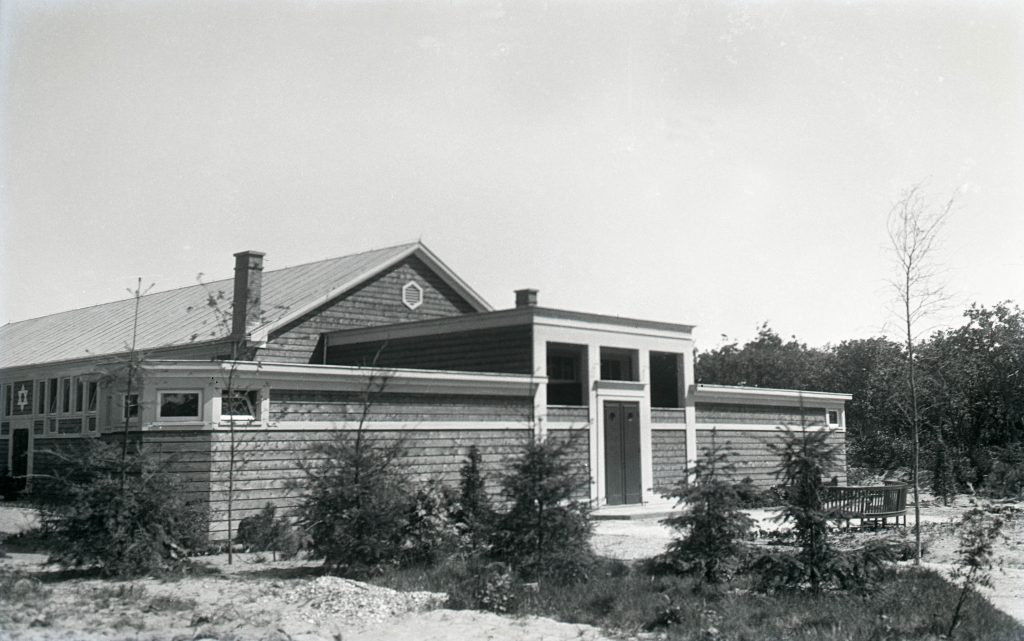
From April to December 1944 the German army claimed St. Michaels House as living quarters for a German officer and all the inhabitants of the House had to leave at short notice. Though contributions from Centre members from abroad stopped during war time the financial situation after the war was better than before due to a lack of materials for maintenance. As a result, the buildings rapidly deteriorated.
After the War
After the war, the work was taken up again with much vigour. The Dutch PC Meuleman Foundation, owner of the building for the Dutch section in Amsterdam was kind enough to give a loan through which much needed maintenance could be implemented. Big meetings were organised. The ordination of Bishop De Vogel in 1948 for instance attracted over 500 persons! Many camped at the Centre during holidays, often with the whole family. Others stayed in the houses of Centre members living close by. Just after war a nearby house was rented to be able to receive more guests.
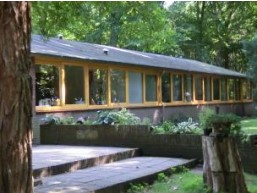
The pre-war lodge building became a hostel with two dormitories, which was particularly suitable for younger guests. In 1960 a group of students from Delft University took the initiative to build a new Guest House, the former Arundale House, which offered lodging for over 20 people.
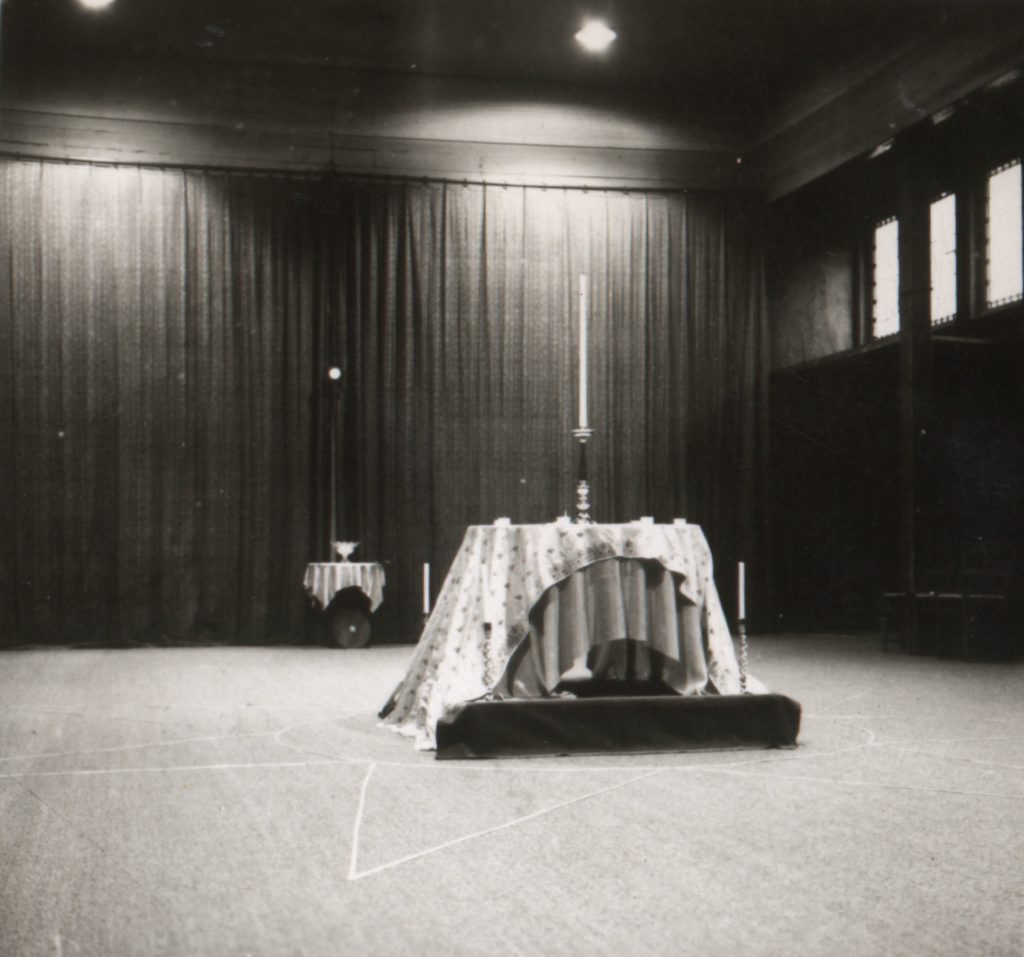
The focus of the work changed over the years. Thanks to the lectures of Prof. J. Van der Stok much attention was paid to the occult aspects of the work. Gradually the focus of the work shifted towards the regeneration of man. Though the aims of the ITC remain the same, the way this is expressed may change over the years. Time and again the ITC workers seek to improve and adjust the form according to the opportunities and needs of the time.
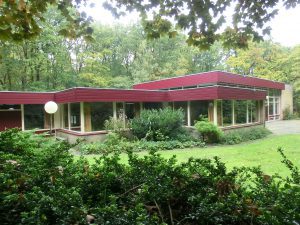
A second disaster occurred in 1966 when the original Besant Hall went up in flames. The valuable library was also lost. Sometimes, however, a disaster gives space for something new.
Mrs. Rukmini Devi Arundale then launched a major effort to have a large and modern Besant Hall built, with a new separate chapel for the LCC. She decided that the new building should be welcoming, suitable for art performances and open to nature.
Relationship with the Liberal Catholic Church (LCC)
One of the striking things in the minutes of the pre war Trust Board is the close relationship with the work of the LCC. The minutes show that the Board was much involved with the purchase and financing of the church organ, who was allowed to play on it, who was not, and who had to take further lessons as the current playing was considered not quite satisfactory! The Centre paid the vicar, contributed to the costs of the church robes and covered part of the exploitation losses of the church, and, moreover, was actively involved in the appointment of the priests. The explanation for this is that the chapel was considered a private chapel, in fact that of Mrs. Mary. As a result, up to today the ITC has a good relationship with the local church community.
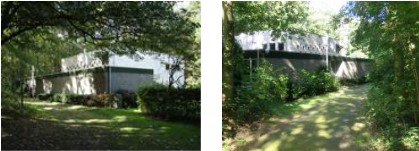 Over the years the involvement with the LCC work diminished and at present the profile of the ITC is theosophical only. Nevertheless, the relationship with the local remains unique. Rukmini called the church “a power-house” of the ITC. After the fire, the church community and the Trust Board of the ITC developed plans to build a new chapel at the ITC, comparable with the temples of the different world religions in Adyar. Funds were collected through the treasurer of the ITC. However, this proved insufficient. At the time the Dutch government gave considerable subsidies for the building of churches, provided the church itself were to build, and not the ITC. The only option for the ITC was to give out the land in a long-term lease for a minimum duration of 40 years as determined by the ministry.
Over the years the involvement with the LCC work diminished and at present the profile of the ITC is theosophical only. Nevertheless, the relationship with the local remains unique. Rukmini called the church “a power-house” of the ITC. After the fire, the church community and the Trust Board of the ITC developed plans to build a new chapel at the ITC, comparable with the temples of the different world religions in Adyar. Funds were collected through the treasurer of the ITC. However, this proved insufficient. At the time the Dutch government gave considerable subsidies for the building of churches, provided the church itself were to build, and not the ITC. The only option for the ITC was to give out the land in a long-term lease for a minimum duration of 40 years as determined by the ministry.
The long-term lease structure was therefore a creative solution with the aim to reverse this to the original intended situation. This has always been the intention of both parties. This long-term lease contract ended in 2011 and has meanwhile been replaced by an on-going lease contract of the land and chapel. The change from long term lease with its “own” LCC chapel to a – symbolic – rent of the chapel, owned by the ITC, was thus realised in a harmonious way.
George and Rukmini Devi Arundale
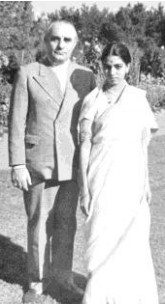
Any description of the ITC cannot be complete without paying attention to the great contribution of George and Rukmini Arundale. They came to the Centre for the first time on 24 December 1924, having been invited by Bishop Wedgwood for Christmas and the ordination into the priesthood of Oscar Köllerstrom. That winter they stayed at the castle of Baron van Pallandt in Ommen at the invitation of Krishnamurti. They came back in June and July 1925. Annie Besant stayed there for several months as well, which led to the donation of the estate by Mrs. Van Eeghen. This was the beginning of many visits and a close relationship with the Arundales. In 1930 George Arundale succeeded Wedgwood as Head of the Centre. When Arundale became President of the TS Rukmini succeeded him as Head of the Centre, which function she kept until her death in 1986. During each visit of the Arundales the work of Centre was given an enormous – and often very practical – impulse, time and again. In 1931 the Arundales even considered coming to live at St. Michael’s House. In 1932 George suggested to use the masonic temple more broadly and to call the western part of this wooden building Besant Hall. His active involvement to help solve the financial problems of the ITC in the nineteen thirties cannot be underestimated. His influence here was crucial for the survival of the Centre.
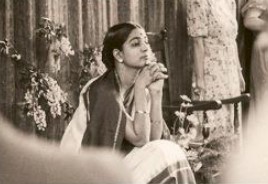 Rukmini often tried to involve younger people in the work, and she had great interest in art and animal welfare. She had the intention to make the ITC into a meditation centre, which would represent all the world religions. To this end she received an exceptionally beautiful Buddha statue which she saw as the beginning of new forms of meditation and spiritual activities. As Head of the Centre Rukmini took all the major decisions. As she lived far away at Adyar this model to govern the Centre was not easy. As a result, the Board was not always equally resolute, and decisions made were sometimes reversed by her. Nevertheless, this worked all those years due to the great respect people had for Rukmini. Around 1980 Rukmini started to look for a successor. She was then, however, advised that there would never be another “Rukmini” and that in due time a new model to govern the Centre should be found. Rukmini accepted this advise and left the succession open.
Rukmini often tried to involve younger people in the work, and she had great interest in art and animal welfare. She had the intention to make the ITC into a meditation centre, which would represent all the world religions. To this end she received an exceptionally beautiful Buddha statue which she saw as the beginning of new forms of meditation and spiritual activities. As Head of the Centre Rukmini took all the major decisions. As she lived far away at Adyar this model to govern the Centre was not easy. As a result, the Board was not always equally resolute, and decisions made were sometimes reversed by her. Nevertheless, this worked all those years due to the great respect people had for Rukmini. Around 1980 Rukmini started to look for a successor. She was then, however, advised that there would never be another “Rukmini” and that in due time a new model to govern the Centre should be found. Rukmini accepted this advise and left the succession open.
Relationship with Adyar
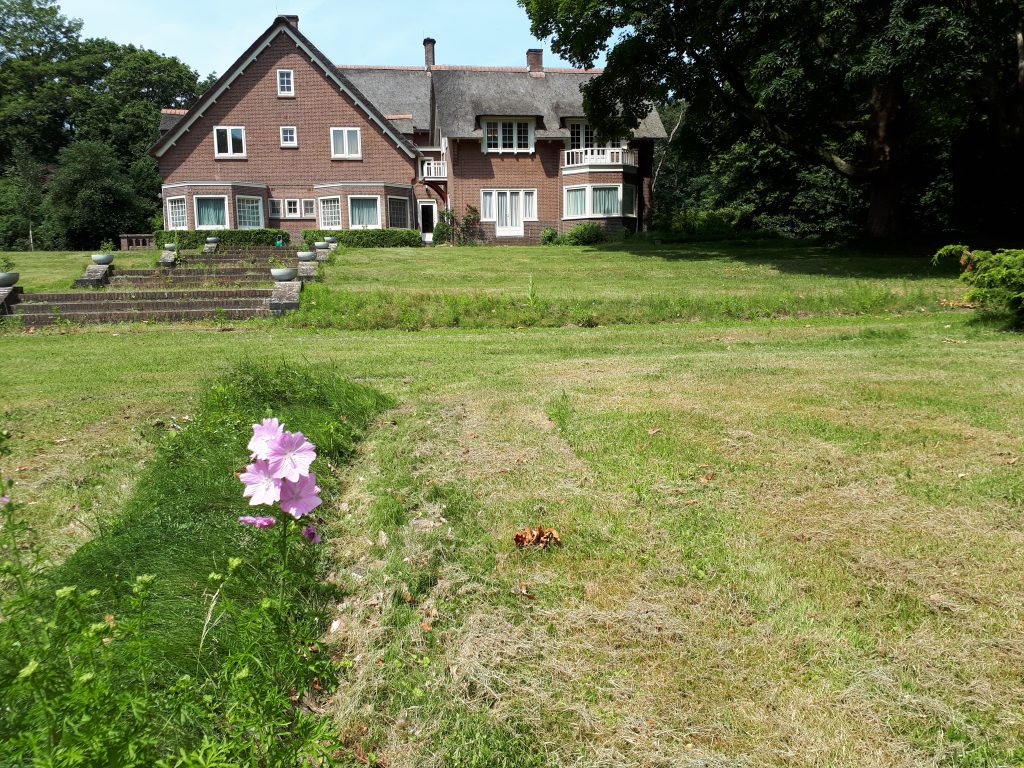 The relationship with Adyar has not always been simple and easy. Both Annie Besant and George Arundale were honorary chairmen of the ITC and thus connected with it. Jinarajadasa as 4th President of the TS, however, had the view that the ITC at the time was mainly a church centre and though he acknowledged that the ITC had an occult link with the President of the TS he kept his distance from the work of the Centre. Also, Sri Ram, the 5th President of the TS, did not play an active role at the Centre. Apparently, he left this to his sister Rukmini, through whom an informal relationship existed with Adyar.
The relationship with Adyar has not always been simple and easy. Both Annie Besant and George Arundale were honorary chairmen of the ITC and thus connected with it. Jinarajadasa as 4th President of the TS, however, had the view that the ITC at the time was mainly a church centre and though he acknowledged that the ITC had an occult link with the President of the TS he kept his distance from the work of the Centre. Also, Sri Ram, the 5th President of the TS, did not play an active role at the Centre. Apparently, he left this to his sister Rukmini, through whom an informal relationship existed with Adyar.
After the death of Rukmini, a new situation emerged. The Trust Board took the time to consider a new model to govern the Centre. This model needed to include a direct and irreversible connection with Adyar. The function of Head was abolished and the newly Council was to be responsible for all current affairs.
The President of the TS has become honorary chairman of the ITC, with certain powers to safeguard the theosophical identity of the Centre. Radha Burnier, in her capacity of President of the TS, fully agreed with this model. In 1988 the Council made the changes in its statutes accordingly.
The centre today
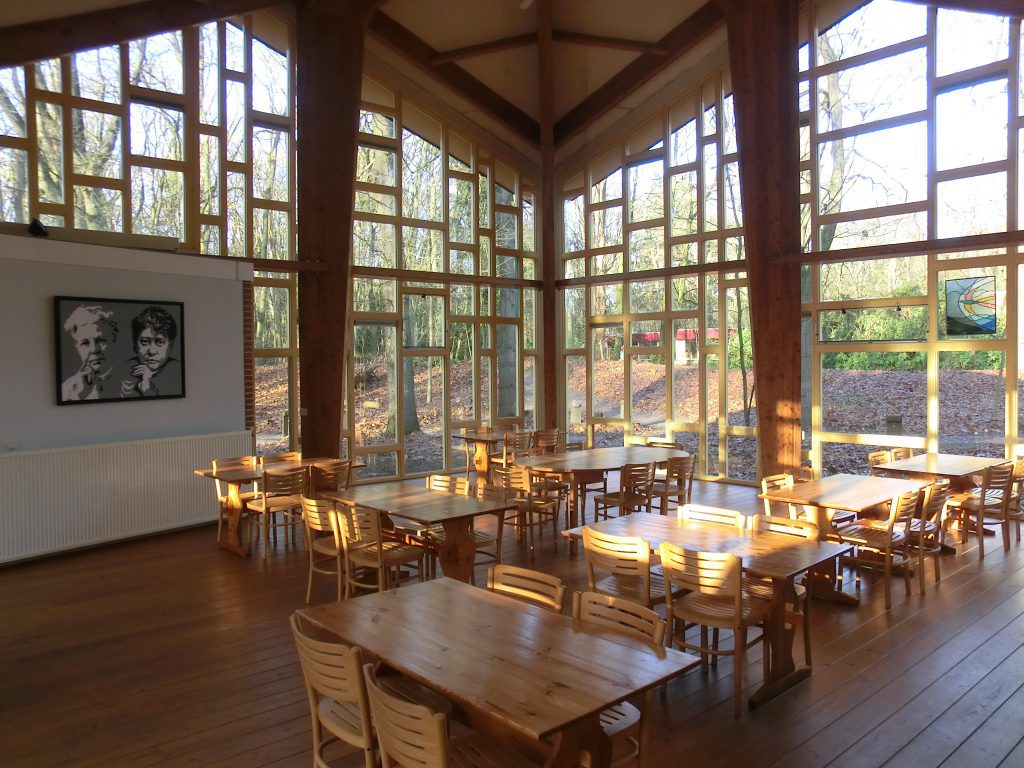 Since this formal relationship with Adyar and the President of the TS, it was decided that the Centre, in its function of European home of the TS, should offer better facilities to be able to receive guests from abroad.
Since this formal relationship with Adyar and the President of the TS, it was decided that the Centre, in its function of European home of the TS, should offer better facilities to be able to receive guests from abroad.
So, plans were developed to establish a modern guesthouse and dining hall. Plans do not cost a cent and the Centre itself did not have any money.
Nevertheless, as miracles happen at ITC, the money was collected though donations of Friends and TS sections, and the new Crystal House and Hall was built in 1999.
Then it was decided that we should be able to offer facilities for individuals, for a personal retreat or study. So in 2011 three wooden cabins have been built opposite the meditation garden.
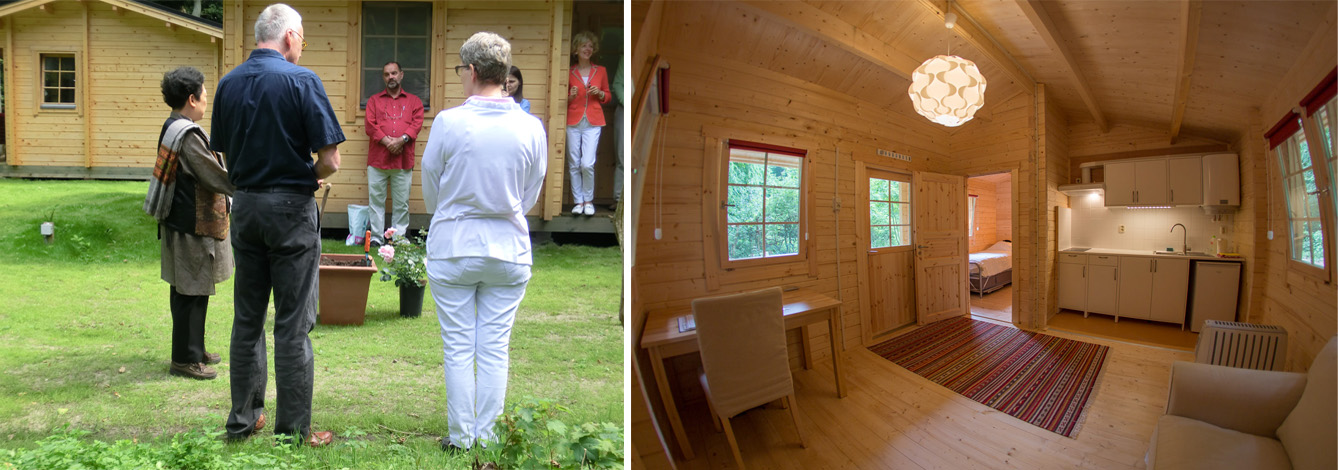
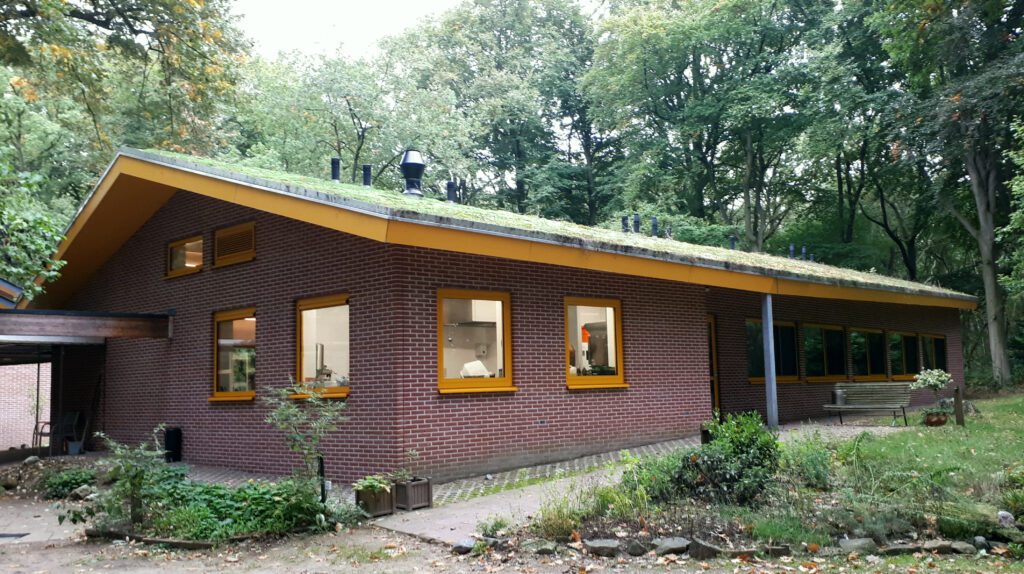
Finally, it was observed that the original Arundale Guesthouse, built low budget in 1960, was no longer suitable for current requirements.
In 2019 it was replaced by the state-of-the-art Lotus House.
